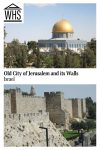Old City of Jerusalem and its Walls
By Rachel Heller
What is the Old City of Jerusalem and its Walls?
Jerusalem is an ancient city, dating back to about 3000 BC. Today it takes a place of crucial importance in three different world religions: Judaism, Islam and Christianity. It has been considered a holy city since Biblical times, and it is the place where many of the Biblical stories took place. In the Islamic world, it is the third most important place after Mecca and Medina: considered the place where Muhammad ascended to heaven. For Christians, Jerusalem is central to Jesus’s life and the place where he was crucified and resurrected.
Disclosure: This article contains affiliate links. Making a purchase through an affiliate link will mean a small commission for this website. This will not affect your price. Privacy policy.
While Jerusalem is ancient, it is also still a living and dynamic city that deals on a day-to-day basis with the pressures of its very diverse population.
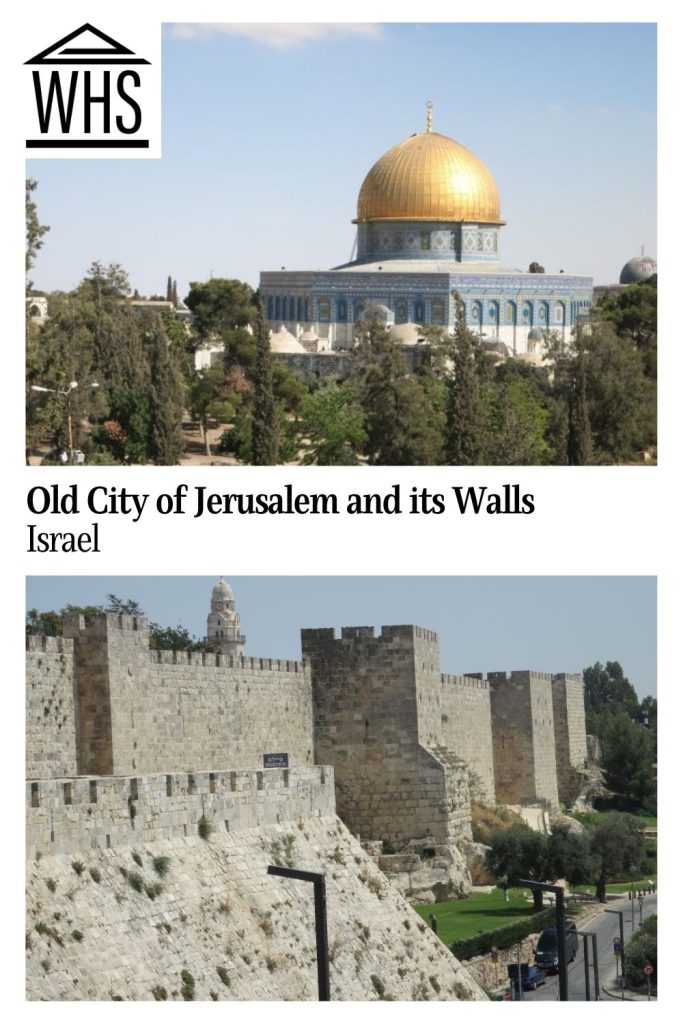
The UNESCO designation does not include the entire city of Jerusalem: only the Old City lying within its ancient walls. Inside the UNESCO area are more than 220 distinct monuments.
Why is Jerusalem a UNESCO World Heritage site?
According to UNESCO, Jerusalem is important in terms of “interchange of human values” over millennia as evidenced by its status as a holy city to three different religions. This also feeds into the argument that it represents “a unique or at least exceptional testimony to a cultural tradition or to a civilization”: in this case, three different religions. And it is “directly and tangibly” connected with traditions and beliefs today for the same reason.
Everywhere in the Old City of Jerusalem the layers of history and religion are visible and tangible. The most obvious example is the Western Wall (also known as the Wailing Wall), which is what remains of the ancient Second Temple, according to Jewish beliefs. It is, essentially, a retaining wall supporting the Temple Mount, where the temple once stood. On that hill, directly supported by the Western Wall, stands the Dome of the Rock. It is at the center of a mosque complex that marks the spot where God is believed to have created the world and Adam, as well as where Abraham tried to sacrifice his son, and where Muhammad is believed to have ascended to heaven. So the location is sacred to all three religions.
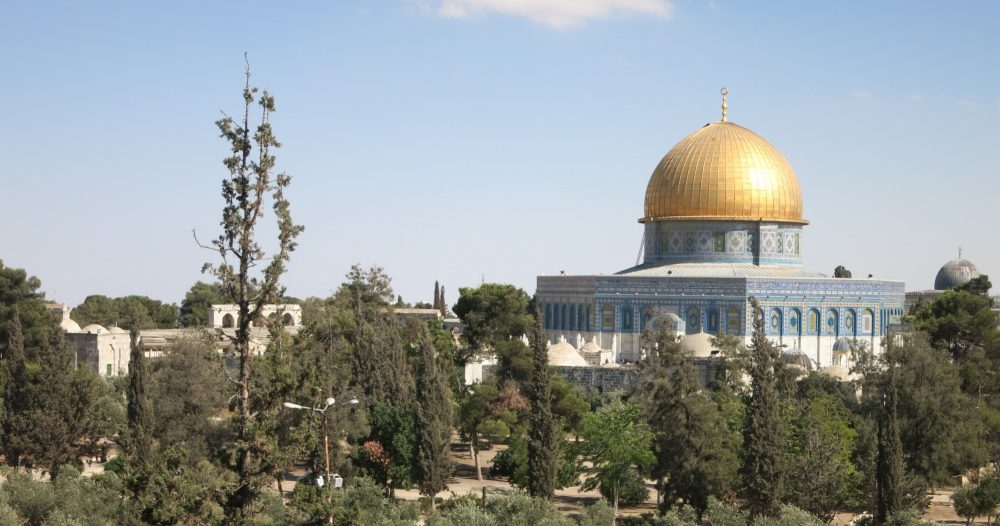
Controversy
Interestingly, adding Jerusalem to the list was a contentious decision. The arguments were not about whether it was worthy of becoming a UNESCO site: all countries who were party to the World Heritage Convention agreed that it was. The question had to do with politics. Many countries considered (and still consider) Israel an occupier rather than the rightful ruler of Jerusalem. At the same time, many did not recognize Jordan as having any right to submit the application. This led to quite a few countries abstaining from the vote.
The situation was further complicated by the fact that the state of Israel was not a member of the World Heritage Convention. For this reason, Israel was not even allowed to take part in the discussions about Jerusalem’s application to become a UNESCO site.
Jerusalem became a UNESCO site in 1981. In UNESCO’s list, it is not part of Israel or Jordan, but has a separate listing as “Jerusalem (Site proposed by Jordan)”.
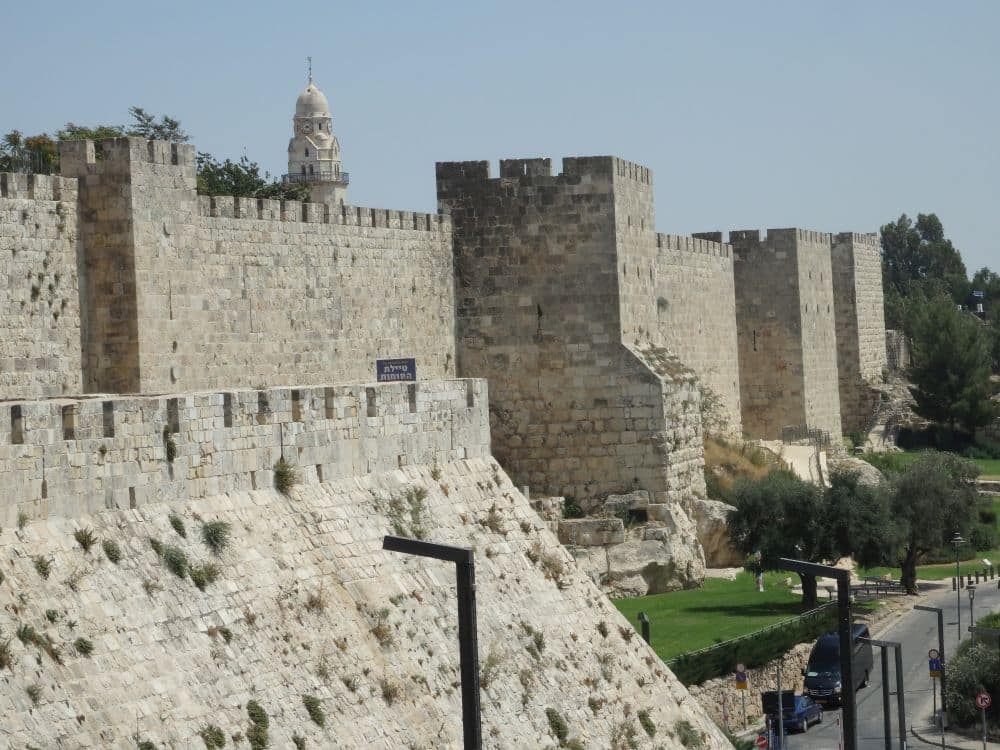
World Heritage in Danger
The very next year, UNESCO inscribed Jerusalem on its list of World Heritage in Danger, where it remains to this day. Since Jordan is not, in fact, in charge of Jerusalem, it is not in charge of its conservation. The Old City is in danger because of its unclear legal status and its lack of a conservation policy. Urban development in general threatens the Old City, as do the effects of mass tourism and political unrest. Many of the monuments are not well protected.
Tentative List
Jerusalem is also on the UNESCO World Heritage tentative list as “Jerusalem – the Old City and Ramparts to include Mount Zion,” an extension of the existing site. The purpose of this proposal is, first of all, to create a buffer zone around the built city to help conserve the original site. But it would also extend the site to include additional monuments important to all three religions.
This adjustment to the site was proposed in 2000, by Israel this time. In 2001, the UNESCO Conference decided to table the application until the UN makes a decision on the status of the City of Jerusalem.
What can you expect on a visit to Jerusalem and its Walls?
Jerusalem Old City is very compact, and all of its narrow streets are walkable within a day. You cannot enter using a car. It is traditionally divided into four historical quarters – a Jewish Quarter, a Christian Quarter, a Muslim Quarter and an Armenian Quarter – though these no longer strictly follow the facts on the ground. Pretty much everything within the walls is ancient, whether that means from Biblical times, Roman times, or the Ottoman period.
Just walking around inside the walls is an experience: it is crowded with locals – Muslims, Jews and Christians – as well as tourists, some of whom are there as part of a religious pilgrimage. It is hectic and loud and messy, but it is absolutely fascinating. You’ll find that no matter where you walk, you’re likely to end up at the large plaza where the Western Wall is, and where one of the entrances up to the Temple Mount is.
The Temple Mount
To enter the plaza in front of the Western Wall, everyone has to pass through airport-like security. The wall is massive, made from huge stones, especially on the lower levels. Religious Jews pray there at the base of the wall – men and women in separate sections – and sometimes place handwritten prayers between the stones.
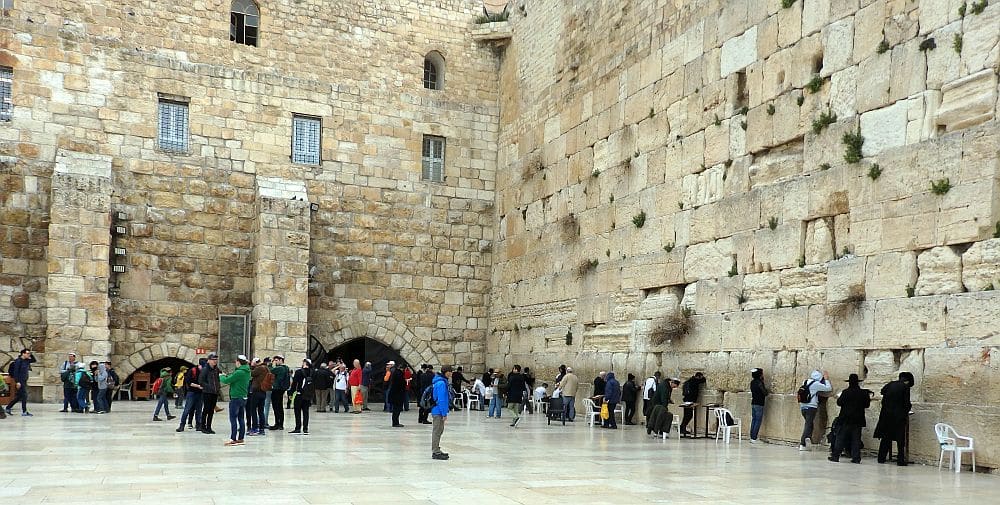
An enclosed bridge leads from the plaza up to the Temple Mount. If tensions are high, it will be closed, but if not, visitors can pass through security again to climb the sloping bridge up to the gold-topped Dome of the Rock, purported to be the world’s oldest Muslim architecture. Also on the Temple Mount is Al-Aqsa Mosque, the Old City’s main mosque.
Religious Jews will not visit the Temple Mount because they fear that they might inadvertently enter the place where the Holy of Holies once was and where the Ark of the Covenant once stood. This is why they pray below the Mount at the Western Wall.
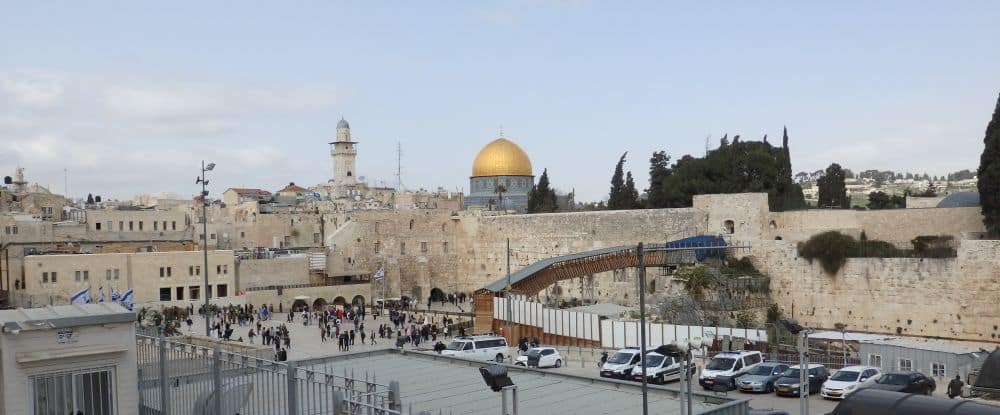
The Via Dolorosa
Besides the Western Wall and the Dome of the Rock, the Via Dolorosa nearby is a major site, passing mostly through the Muslim Quarter. This is where Christians believe Jesus carried the cross to the place of his crucifixion. Each of the Stations of the Cross is marked with a sign or with a small church or chapel. Along the way, you’ll walk a narrow street lined with stalls selling all sorts of religious paraphernalia. You may spot pilgrims too, some walking barefoot and carrying crosses.
The Church of the Holy Sepulchre is a fascinating building at the place where Christians believe that Jesus’s crucifixion took place, and where his tomb was. It’s in a hodgepodge of styles and periods. Like the rest of the city, the church is divided into territories for each major Christian denominations, who take very careful turns carrying out their rituals. Apparently a single Muslim family, to ensure impartiality, is responsible for the key to the church.
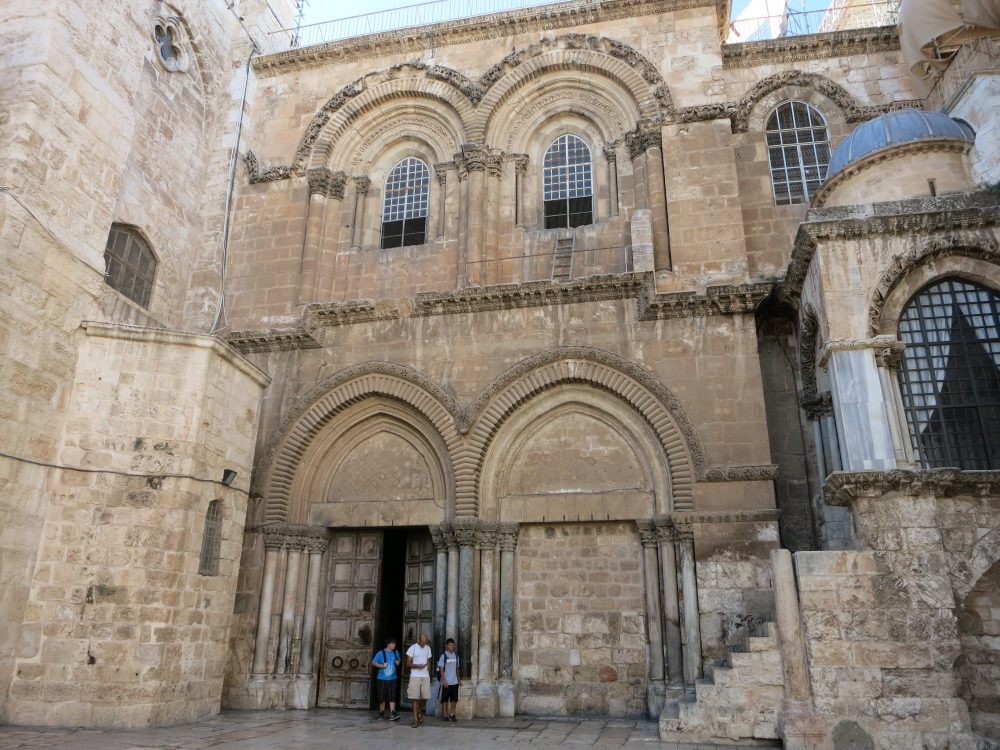
There are many more monuments and sights within the city. At every turn, it seems, there’s an excavation or a museum or an ancient mosque or church or synagogue. Your best bet is to take a walking tour of the city to get a clear understanding of what you’re seeing. There are plenty of them, often covering a single theme.
Parts of the wall around the Old City date all the way back to Herod the Great, while other parts are from the Ottoman period. It has a number of gates, with the Jaffa Gate being the one you’re most likely to enter. All of them are worth a look as they date to a range of different periods.
Is Jerusalem worth visiting?
Not only is it worth visiting, I’d suggest that if you could only visit one single UNESCO site in the world, it should be this one. No other city in the world has been as important in world history as Jerusalem. You do not have to be religious: just interested in history.
Having said that, I think it would be less interesting for younger children. They’d be well-received – Jerusalem residents of all religions are happy to welcome children – but they might not find it so interesting until they’re older.
It’s also important to know that the city is not wheelchair-friendly. Many of the “streets” have steps with only very narrow ramps that shopkeepers use to haul goods on carts through the streets. The question is whether these would accommodate a modern wheelchair. I doubt it.
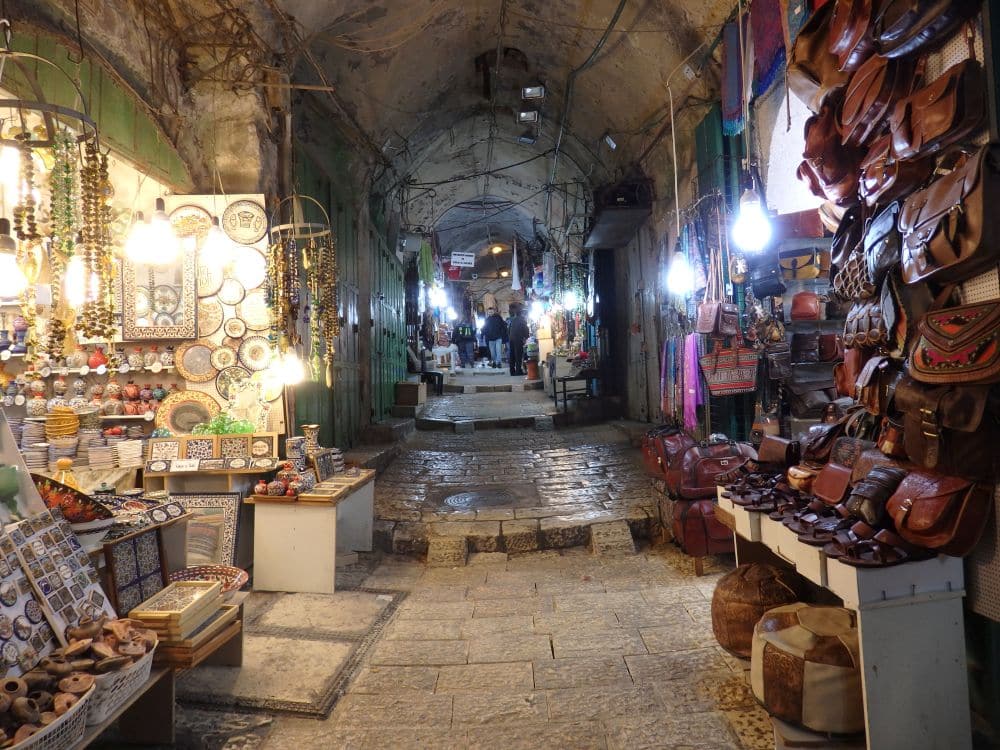
The streets also get very crowded. They only seem to empty out when tensions are high or there have been incidents or attacks between Palestinians and Israelis. Then the tourists stop coming and the tensions can lead to closings or checkpoints in the city.
Tips for visiting Jerusalem
Check your government’s travel advisories before deciding whether to go to Israel and whether there are particular warnings about Jerusalem.
What to see
I recommend visiting the Tower of David first, before exploring the Old City. Its entrance is just inside the Jaffa Gate. It gives an excellent summary of the city’s long history. From the roof you can get your first impressions of the city.
From nearby the Tower of David you can walk along the top of the wall on the so-called Ramparts Walk for a distance in either direction: from the Jaffa Gate to either the Western Wall or the Lions Gate. Both walks offer great views of the city and outside it.
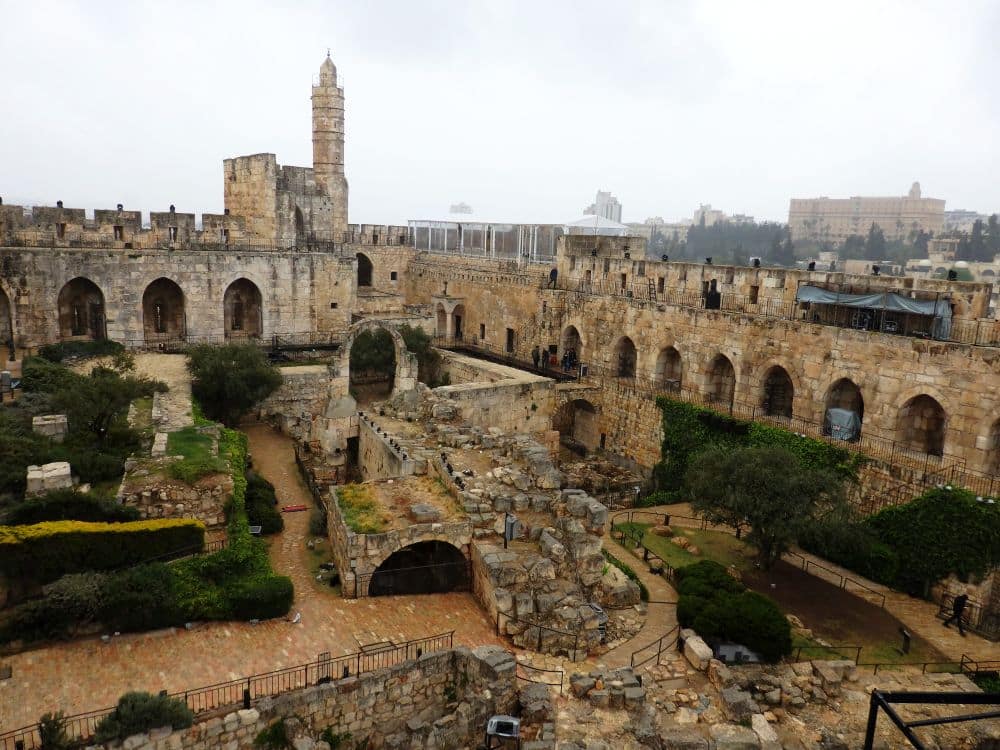
At the Western Wall, you can watch as observant Jews pray. Don’t enter the prayer sections unless you are dressed appropriately – well covered up and wearing a kipah (men) or a scarf (women). Men and women pray separately, following Orthodox tradition.
If the Biblical history of the city particularly interests you – meaning the Old Testament – go to the City of David excavations just outside the Dung Gate. The archeological remains there date to when the Biblical King David reigned. You might also like the tunnel tour that leads underground along the base of the Western Wall, which was originally much longer but is obscured by the city that grew up around it.
As you stroll the Old City, stay observant. You’re liable to spot, for example, remnants of Roman-era streets and marketplaces or architectural elements from the Crusader period, if you keep your eyes open.
Try the hummus; it’s the best in the world. And also falafel with fresh pita bread. Drink strong Arabic coffee or tea. Shop for ceramics in the Armenian Quarter. Shop for Christian and Jewish items in the Muslim Quarter.
Outside the Old City
In Jerusalem, but outside of the Old City, are a few other sights that I would highly recommend, particularly Yad Vashem (the Holocaust museum) and the Israel Museum, home of the Dead Sea Scrolls. Both are excellent museums.
In the Palestinian territory nearby to Jerusalem, you might also want to visit Bethlehem, Hebron and/or Jericho.
If there’s one other site outside of the Old City of Jerusalem that you must see, it’s Masada, another UNESCO site overlooking the Dead Sea. Plan to stay overnight nearby so you can hike up for the sunrise.
If you have more time, go see some of the Christian sites around the Sea of Galilee. Also visit Haifa, particularly the stunning Bahai temple there.
Keeping safe and respecting the culture(s)
Modest dress, especially for women, is advisable everywhere in Jerusalem: knees and shoulders covered, and no tight or revealing clothing. (And for this reason, I’d suggest not visiting in the summertime. While Jerusalem is cooler than most of Israel, it is still stiflingly hot in the summer.) In mosques women will need to wear a scarf.
Watch your step inside the Old City. The streets often have steps or stairways, and many of these are ancient, so the steps may not be all the same height. If they’re wet, they may be slippery, since they’re often quite smooth after centuries of foot traffic.
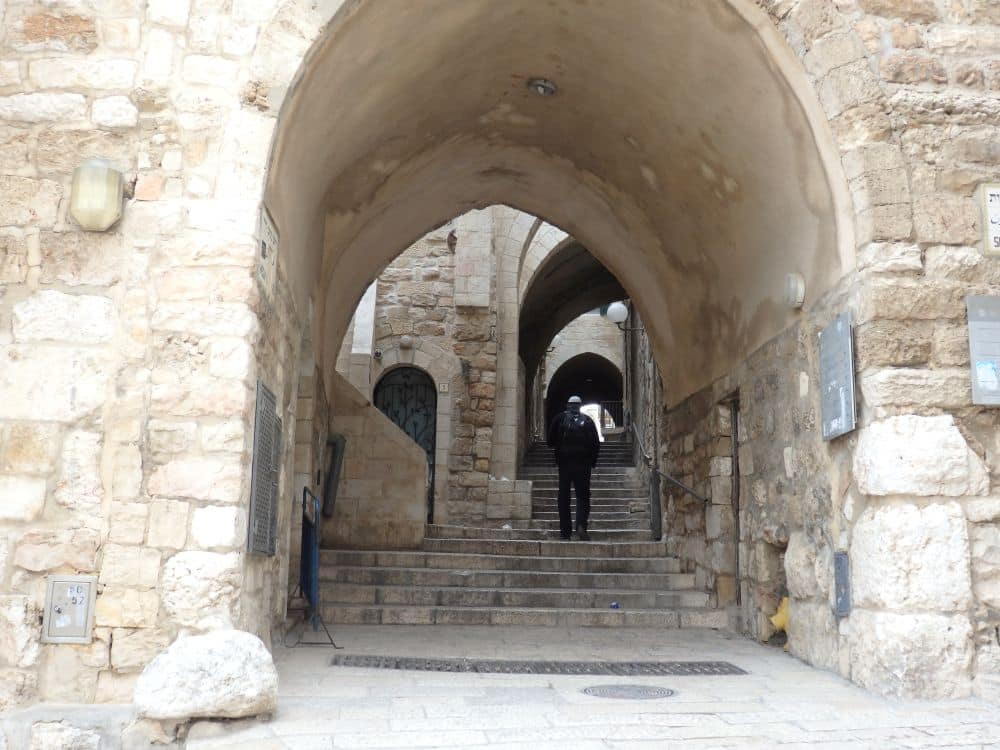
When it’s crowded, which it often is in the narrow streets of the Old City, watch out for pickpockets. Carry things in inside pockets, a money belt, or a shoulder bag across your chest in front.
Vendors can get aggressive, trying to get you to come into their shops and buy their wares. A very firm “no” should work. If you stop and look at anything they’re selling, they’ll get pushier. Make sure to haggle, but not too much. I’d advise starting at half what they ask and allowing yourself to be haggled back up.
Don’t close down entirely, though. One of my favorite memories from Jerusalem was when I visited while Israel and Hamas were briefly at war back in 2014. The rockets from Gaza didn’t reach as far as Jerusalem, but the conflict had led almost all tourists to cancel their trips. The streets were uncharacteristically empty, yet the stalls were open. As I walked one of the narrow streets, few vendors called out to me. One did, though, and I said my usual firm “No!” He responded with “But I’m so bored – just come talk to me!” I decided, contrary to my usual response, to believe him. We ended up sitting on the floor of his little shop enjoying a cup of strong minty tea and having a very pleasant chat. He didn’t try to sell me anything at all.
Where to stay
There are some small hotels and hostels within the walls, and many more within walking distance outside the walls. The King David Hotel is the most famous and has a view of the walled city. It’s where all the visiting politicians and dignitaries tend to stay. You can’t drive into the Old City, but many hotels outside the walls have parking or can at least help you find a place to park, usually for a fee. It’s best to park at the hotel and get around on foot or by taxi. Use the map below to find a hotel near the Jaffa Gate (the red pointer on the map).
Where is Jerusalem?
Jerusalem is in the eastern part of Israel, but Jordan has retained its authority over the Temple Mount. The larger city of Jerusalem is surrounded on three sides by the West Bank, which is mostly Palestinian territory, part of the proposed “two-state solution.” Both the Palestinians and the Israelis see Jerusalem as their capital.
Travel by car
Driving is the easiest way to get around in Israel. Rent a car from Ben Gurion Airport. If you are driving from Ben Gurion Airport or Tel Aviv, it’s easy enough to get to Jerusalem via highway 1. From the airport to Jerusalem will take about 45 minutes; from Tel Aviv, about an hour. From anywhere else in Israel, make sure to consult a map before choosing a route. You need to avoid straying into the West Bank with a rental car with Israeli plates. It can make you a target, and it also voids your rental car insurance.
For this reason, if you want to visit any of the Palestine World Heritage sites like Bethlehem, Jericho or Hebron, you’ll need to sign up for a day tour. They’re definitely worth seeing, though!
I would also suggest avoiding driving within Jerusalem. The traffic can be terrible and the driving can get aggressive. Stick with public transportation or taxis within the city.
By public transportation
If you prefer public transportation to get from Ben Gurion to Jerusalem, you can either take a sherut (shared minivan taxi) or a train. From the train station in Jerusalem you’ll likely need to take a cab to your hotel.
The train system in Israel is quite new and connects all the main cities. So do bus routes. Use this site to check the train schedules. This site shows both bus and train information.
Have you been to Jerusalem? If so, do you have any additional information or advice about this UNESCO World Heritage site? Please add your comments below!

